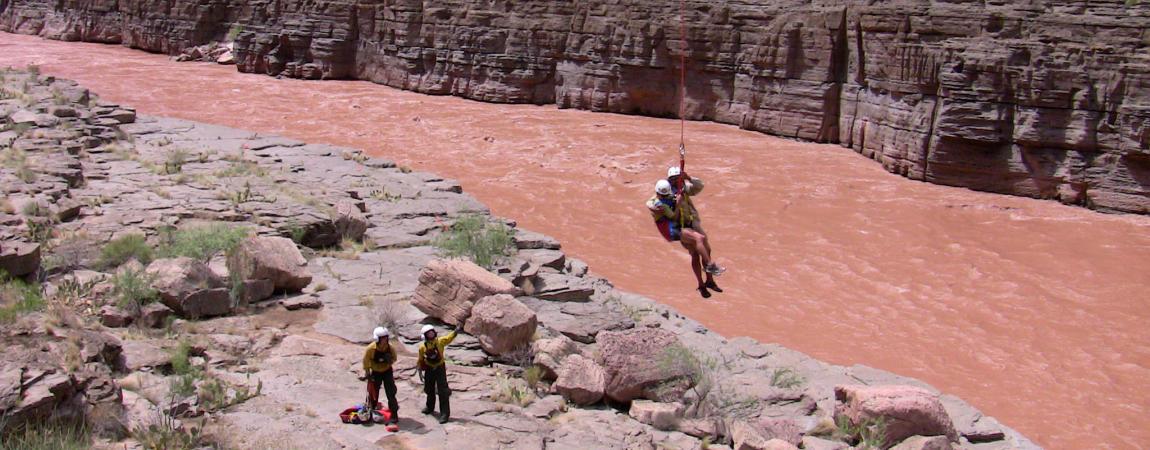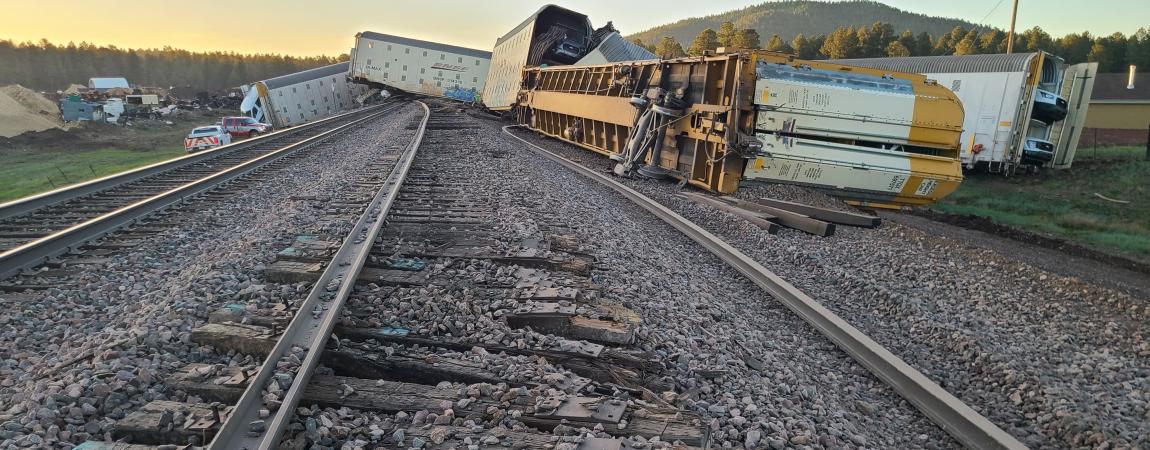Response Branch
The Response Branch is the coordination point for the state’s response and support efforts to the impacted counties and tribes through the allocation of state resources.
When a disaster exceeds local capacities and capabilities, the impacted jurisdiction may ask county emergency management for assistance. If the response needs of the impacted jurisdiction exceed the capabilities of the county, they may request assistance from other counties and/or the State of Arizona.
The Arizona State Emergency Operation Center (SEOC) is the support and coordination facility for state assistance and the Response Branch manages the SEOC when activated. DEMA may recall representatives of state and non-governmental organizations to staff its various Emergency Support Functions within the SEOC and to provide coordinated support to local emergency management response and recovery activities.

Approximately 600 Search and Rescue Missions (SAR) are conducted in the State of Arizona each year. These SAR missions involve individuals who are lost, injured, stranded or deceased in remote and most times inaccessible terrain.

The Field Operations Coordinators serve as liaisons between the county and tribal emergency management and the Division of Emergency Management.
The DEMA/EM Duty Officer handles after-hours emergency response responsibilities. In cooperation with the Response Branch Manager, the Duty Officer receives emergency alerts and coordinates with local emergency officials. The Duty Officer provides 24/7/365 customer service to DEMA’s federal, state, local and tribal emergency response partners, activates the State Emergency Operations Center when directed; and may staff the State Emergency Operations Center after hours as needed.
The on-call Duty Officer can be reached at (602) 469-3401.
Emergency Support Functions (ESF)
Emergency Support Functions (ESFs), along with the Recovery Support Functions (RSFs), provide the structure for coordinating interagency support for a state response to an incident. ESF's/RSF’s are mechanisms for grouping functions most frequently used by the Arizona Department of Emergency and Military Affairs (DEMA) to support the counties during state-declared disasters and emergencies.
The Incident Command System (ICS) provides for the flexibility to assign an ESF and other stakeholder resources according to their capabilities, taskings and requirements to augment and support emergency operations in order to respond to incidents in a more collaborative and cross cutting manner. The following are a list of the Emergency Support Functions and Recovery Support Functions as outlined in the Arizona State Emergency Response and Recovery Plan:
- ESF #1 - Transportation and Infrastructure
- ESF #2 - Communications
- ESF #3 - Public Works and Engineering
- ESF #4 - Firefighting
- ESF #5 - Emergency Management
- ESF #6 - Mass Care
- ESF #7 - Logistics
- ESF #8 – Public Health & Medical Services
- ESF #9 – Search & Rescue
- ESF #10 - Hazardous Materials
- ESF #11 - Agriculture and Natural Resources
- ESF #12 - Energy
- ESF #13 - Public Safety
- ESF #14 - Recovery
- ESF #15 - External Affairs
- RSF #1 – Community Planning & Capacity Building
- RSF #2 – Economic
- RSF #3 – Health & Social Services
- RSF #4 – Housing
- RSF #5 – Infrastructure Systems
- RSF #6 – Natural & Cultural Resources
